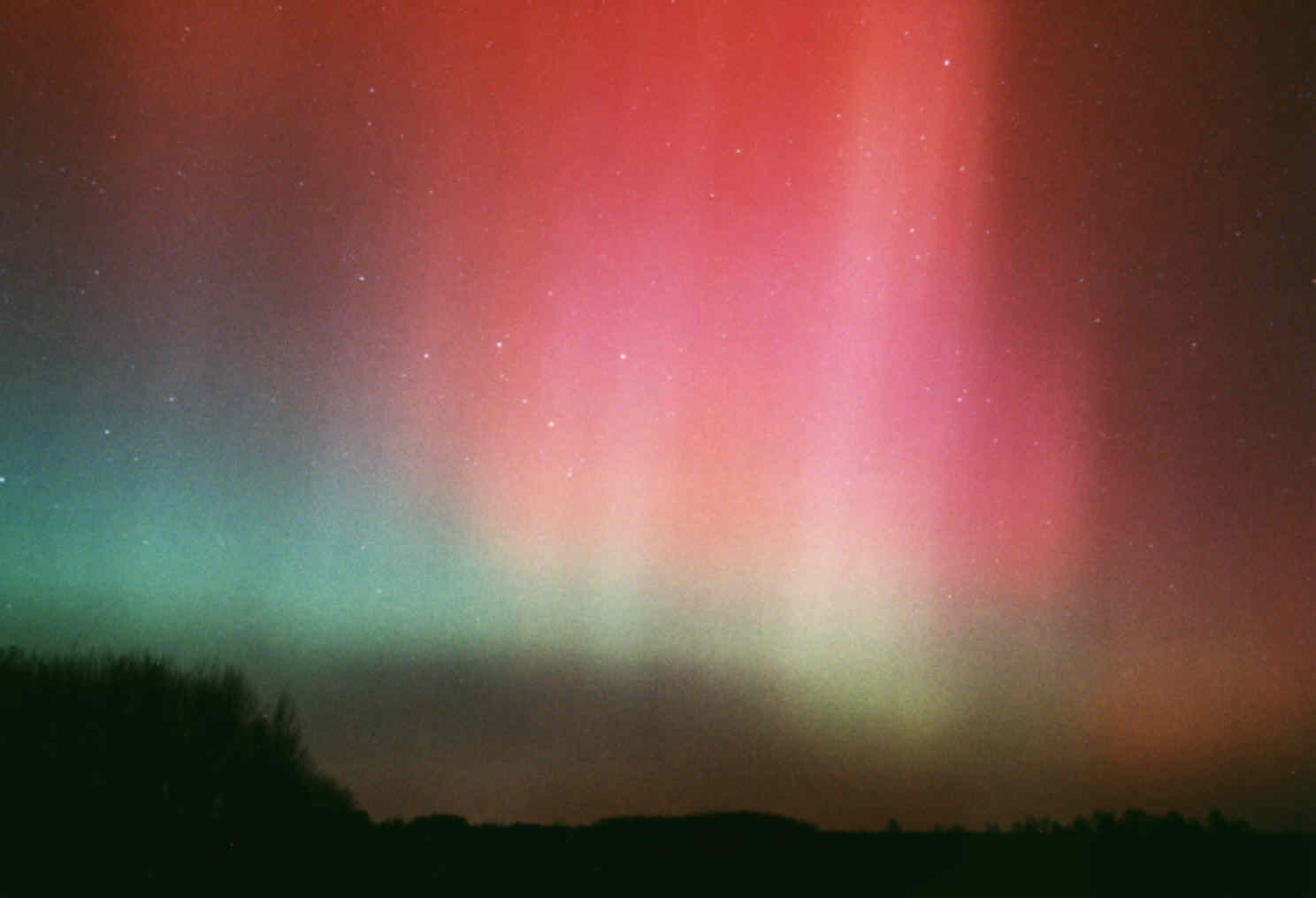 |
 |
|
In der gesamten Nacht 6.-7. April 2000 waren intensive Polarlichter
auch im Potsdam-Berliner Raum sichtbar. Die meisten Formen traten
im Bereich zwischen Nordwest und Nordost auf (hier ist die rechte
"Kante" im Schwan), aber zwischen 0000 und
0030 UT war der gesamte Himmel in verschiedenfarbiges Licht getaucht.
Vom Nordteil des Bootes waren für rund 20 Minuten Koronastrahlen
sichtbar, die von dort aus in alle Richtungen "schossen".
Aurorae were visible for several hours in the night April 6/7, 2000, also over central-eastern Germany. While most forms appeared in the NW - NE sky (right edge of the display in Cygnus at the time of the photo), there was an all-sky display visible between 0000 and 0030 UT, including a faint corona. |
Der ruhige grüne Bogen blieb während der gesamten
Zeit in nördlicher Richtung sichtbar, bis das Polarlicht
ziemlich schnell kurz nach 1 Uhr UT verschwand. Die gelben,
roten und purpurfarbenen Strahlen bewegten sich langsam und reichten
bis zum Zenit.
The stable green arc remained visible from the evening to the (sudden) end of the display shortly after 0100 UT. Rays of red, purple and yellow color moved slowly and reached the zenith. (Fotos/photos: Jürgen Rendtel, Marquardt) |

